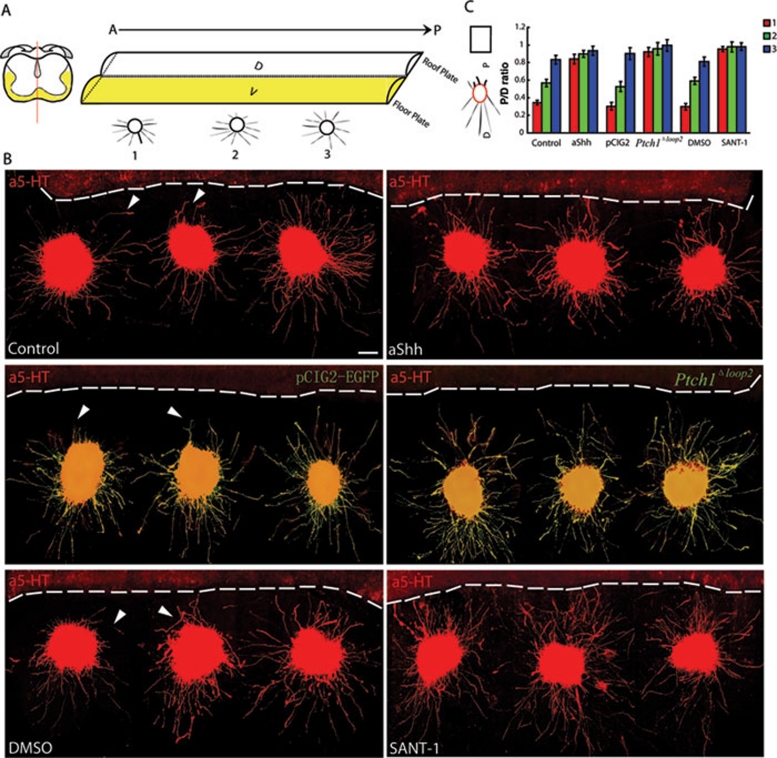Figure 4.
A-P graded repulsion is mediated by Shh signaling. (A) Schematic depiction of the A-P graded assay. After dissecting the ipsilateral CRN and spinal cord of E12.5 embryos, three CRN explants were placed at intervals along the ventral spinal cord in the A-P direction. After culture, immunostaining with anti-5-HT was used to confirm that descending serotonergic RST axons were growing from the CRN explants. (B) Decreasing A-P repulsion of serotonergic RST axons was detected clearly along the ventral spinal cord in the A-P assay. This graded repulsion was abolished effectively when the Shh antibody (5E1) or SANT-1 was added to the co-culture system or when Ptch1Δloop2 was expressed in serotonergic RST axons by co-culturing the Ptch1Δloop2-electroporated CRN with the ventral spinal cord. White arrowheads indicate deflected axons. White dashed lines outline the boundary of the ventral spinal cord. Scale bar: 100 μm. (C) Quantification of axon outgrowth in the A-P assay. Axon outgrowth was measured using the P/D ratio. A-P graded repulsion was abolished after the Shh signaling components were blocked individually. The experiment was replicated at least five times. Statistical analysis was performed using the Student's t-test. Results are presented as the mean ± S.E.M. Control group: 0.345 ± 0.026; 0.568 ± 0.042; 0.832 ± 0.049; Shh Antibody group: 0.839 ± 0.055; 0.898 ± 0.040; 0.933 ± 0.052; pCIG2-EGFP group: 0.303 ± 0.043; 0.527 ± 0.057; 0.902 ± 0.069; Ptch1Δloop2 group: 0.921 ± 0.052; 0.956 ± 0.071; 0.995 ± 0.066; DMSO group: 0.297 ± 0.037; 0.591 ± 0.041; 0.811 ± 0.053; SANT-1 group: 0.954 ± 0.029; 0.979 ± 0.057; 0.981 ± 0.045.

